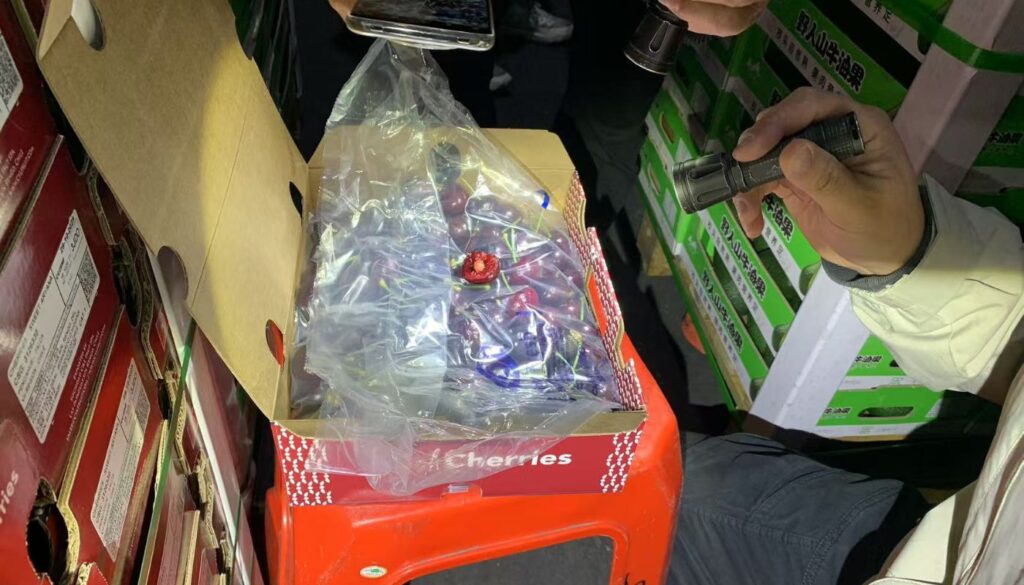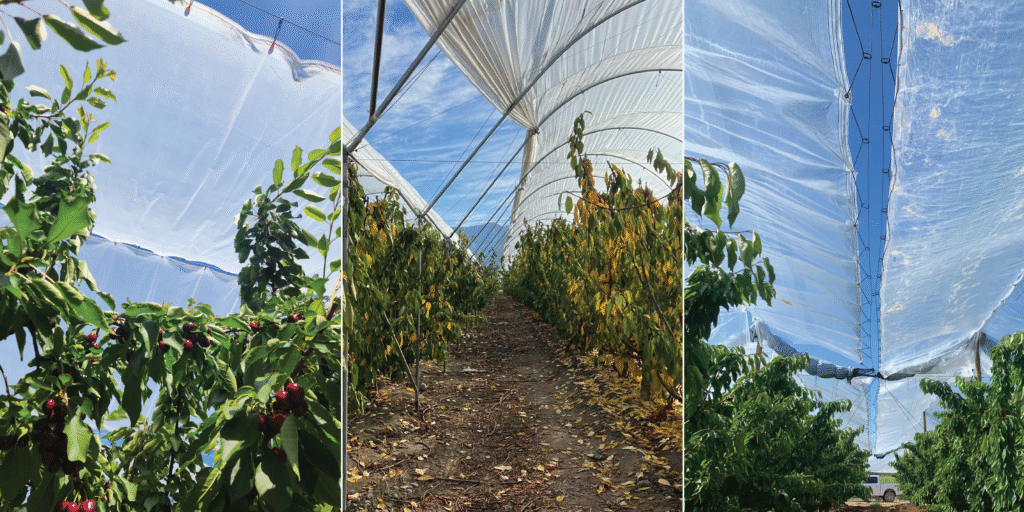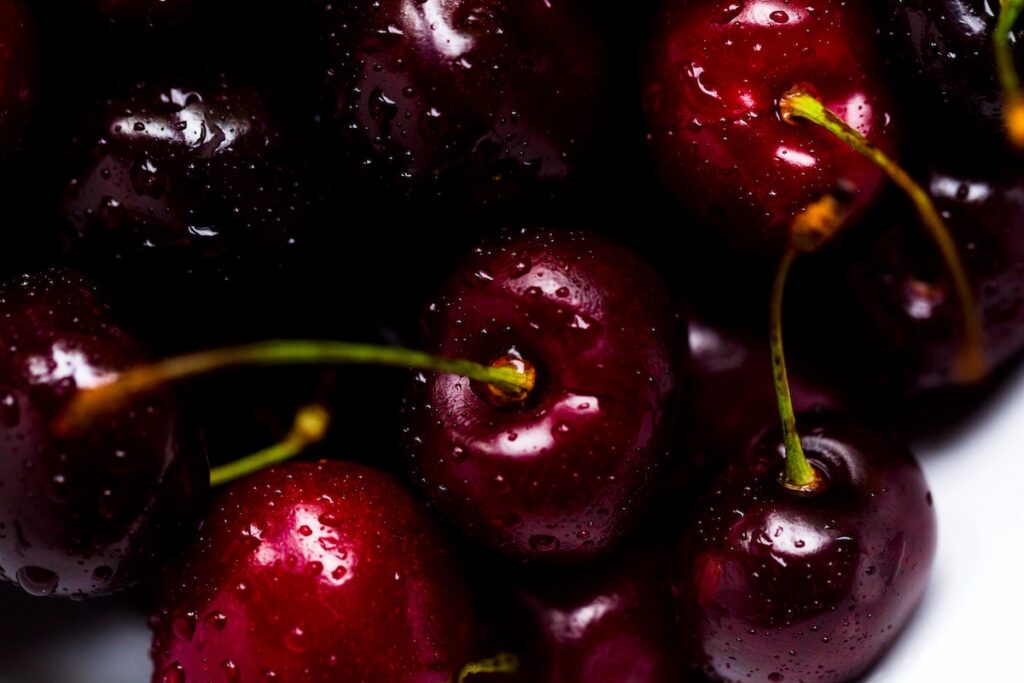Of the total dehydration experienced by cherries during the post-harvest process (from harvesting to arrival at their export destination), the highest percentage occurs at the field collection centers. We are talking about 38% of total dehydration throughout the process, which occurs while the cherry waits in the field to be transported to the processing plant. This is due both to the environmental conditions under which this stage takes place and to the prolonged exposure time of the fruit to these. The high temperatures and low relative humidity typical of the cherry harvest date generate a highly dehydrating environment for this delicate fruit, which with only 0.25 g of weight lost will show symptoms of dehydration such as browning of the pedicel upon arrival at its destination.

To counteract the negative effects that these conditions have on cherries, humidification emerges as a highly effective solution. Johnson Industrial Projects' high-pressure humidification systems generate fine water droplets that disperse in the environment, generating a mist that manages to maintain high levels of relative humidity. This allows the vapor pressure deficit to be reduced, reducing dehydration of the cherry to a minimum during its harvest in the field. In addition, due to high temperatures, part of these small water droplets suspended in the air change from a liquid to a gaseous state, consuming energy from the environment and thus generating a decrease in air temperature. In this way, high-pressure humidification not only reduces dehydration, but also controls the air temperature in the direct environment of the fruit, ensuring that the cherries reach their export destination in optimal conditions.
Benefits of high pressure humidification in field collection centers:
- Reduces dehydration: In a conventional collection centre without humidification systems, the loss of weight due to dehydration of the cherries while they wait to be transported to the processing plant can reach 0.26 %/h in the morning and 0.36 %/h in the hours after midday. An adequate humidification system allows the dehydration of the cherry to be reduced to a minimum at this stage, losing only 0.01 % of its weight for each hour of exposure (Figure 1). This means that 26 hours of storage in a humidified collection centre would be needed for the cherry to dehydrate the same as in 1 hour of storage in a conventional collection centre.
- Maintains green pedicels: The use of humidification systems in field collection centers, by significantly reducing the dehydration of cherries, allows them to reach their destination with a higher percentage of healthy, green pedicels, and a lower percentage of pedicels with severe dehydration (Figure 2).
- Preserves the quality of the fruit: By reducing the dehydration of the cherries, the firmness of the fruit and the appearance of freshness, so valued in the Asian market, are maintained.
- Control the pulp temperature: High-pressure humidification in field collection centres allows the cherry pulp temperature to be controlled at around 20°C through evaporative cooling. Results from a trial carried out in central Chile showed that fruit from the field with a pulp temperature of 30°C, when delivered to a conventional collection centre, maintained a temperature between 25°C and 28°C after 2 hours of storage, while when stored in a humidified collection centre, its pulp temperature was reduced to 20°C. Similarly, cherries with an initial pulp temperature of 20°C saw their temperature increase when stored in a conventional collection centre, while under a humidification system they maintained a constant temperature of 20°C (Figure 3).
- Controls metabolism: Keeping the temperature of the cherry pulp under control at 20°C also helps to keep the metabolism under control. In previous publications we saw how the respiratory rate of cherries is accelerated when the pulp temperature exceeds 20°C, and can even double its value when it reaches 30°C.
- It is an excellent contingency measure: In the event of high traffic situations on the route from the farm to the processing plant, a humidified collection center allows the fruit to be kept in the field for longer, while waiting for the problems on the route to be resolved. Likewise, if there is information indicating that there is a bottleneck at the reception of the processing plant, it is preferable to keep the fruit in the field under humidified conditions, and to carry out the dispatch only when there is certainty that the fruit will arrive on time and will be promptly unloaded and hydro-cooled at the processing plant.
Figure 1. Weight loss experienced by cherries during storage in field collection centers with humidification systems (CH) and without humidification systems (SH), of cherries harvested at 8:30 (AM) and 12:30 (PM).
Figure 2. Condition of the pedicel after 30 days of cold storage in a modified atmosphere bag (simulating a trip to the destination) of cherries that, after harvest, were exposed to a 4-hour wait in a collection center without humidification and in one with humidification.
Figure 3. Evolution of the pulp temperature of cherries with an initial temperature of 20°C (dotted line) and with an initial temperature of 30°C (solid line), stored in a collection center without humidification (blue line) and in a collection center with humidification (red line).
As we can see, post-harvest dehydration of cherries is a major challenge affecting the quality, appearance and shelf life of this valuable fruit, with the storage stage in field collection centres being the most critical phase in terms of dehydration, with 38% of total water loss. However, high-pressure humidification systems have proven to be a highly effective solution to counteract this problem.
The application of this technology allows maintaining optimal humidity levels in the environment surrounding the cherries, avoiding excessive water loss and preserving their quality. This translates into cherries with green pedicels, no browning and a longer shelf life.
In conclusion, the implementation of high-pressure humidification systems represents a valuable investment for the cherry industry, ensuring that this delicate fruit reaches consumers in optimal conditions and maintains its privileged position in the global market.








